In the previous blog, we discussed the Traditional Chinese Medical model of the human body. In TCM, the concept of health is different than that in the West. TCM’s concept of health is based on different principles, all of which are connected to yin-yang and qi.
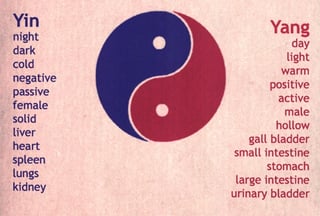 Health and Illness in Traditional Chinese Medicine (TCM)
Health and Illness in Traditional Chinese Medicine (TCM)
Health: According to the TCM view, the body is a complex system of different qi and yin-yang properties, known as the Functional Entities. As mentioned previously, the functional entities are:
- The Five Fundamental Substances: Qi, Xue (Blood), Jinye (Body Fluids), Jing (Essence), and Shen (Spirit).
- Zang-fu: A Wu Xing cycle of 5 zang organs, 6 fu organs, and their functions
- Jing-luo: The channels or meridians through which qi flows
The functional entities perform a series of actions known as the Five Cardinal Functions.
In Traditional Chinese Medicine, the Five Cardinal Functions are:
- Actuation
- Warming
- Defense
- Containment
- Transportation
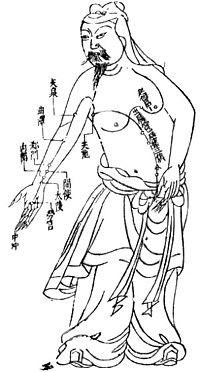 This Jing-luo model from the Ming Dynasty (circa 1500) identifies where qi and blood flow through.
This Jing-luo model from the Ming Dynasty (circa 1500) identifies where qi and blood flow through.
Naturally, it follows that the functional entities are orientated towards achieving balance and harmony. When the functional entities are balanced, they are able to perform the cardinal functions well.
However, what happens when there is imbalance and disharmony of the functional entities?
Illness: When there is disharmony and imbalance of the functional entities, the cardinal functions cannot be not well-performed and as a result, the body becomes ill. Illness then, is ultimately viewed as arising from an imbalance of qi and yin-yang, rather than a purely physical phenomenon.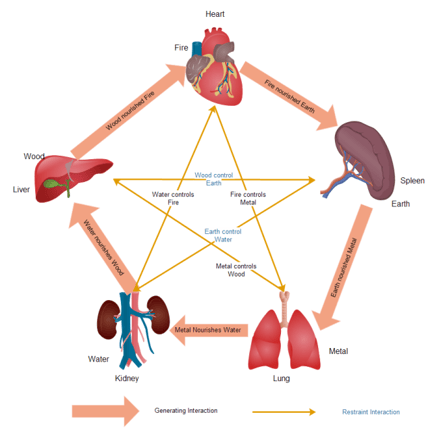
The Wu Xing cycle of the Zang-fu organs.
When a person is ill, he or she will manifest different disease symptoms. Given that everything has Wu Xing, a pattern of disharmony can identified by a trained doctor. Because all the functional entities are interconnected, accurately pinpointing patterns of illness is considered to be the one most challenging aspects for aspiring acupuncturist.
Bìng and Zhèng
In Traditional Chinese Medicine, every disease has two aspects: bìng and zhèng. Bìng translates into “disease category” or “diagnosis,” while, zhèng translates into “pattern.” For example, the bìng of the stomach flu may present the zhèng of Damp-Heat in one person, and Damp-Dryness in another.
Medical treatment in Traditional Chinese Medicine is assigned according to patterns, not symptoms; treatment is assigned according to zhèng , not bìng.
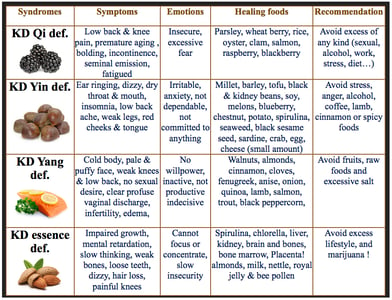 Bìng would be the particular symptoms, but the grouping is the zhèng.
Bìng would be the particular symptoms, but the grouping is the zhèng.
It is often the case that two people have the same bìng, but different zhèng, meaning they will receive different treatments.
This has given rise to a Chinese proverb that translates as “different diseases, same treatment; same disease, different treatments.”
Zhèng
In Traditional Chinese Medicine, zhèng refers to a pattern of disharmony in the functional entities. Ultimately, it is identified by symptoms, which usually involve a combination of affected functional entities. A thorough zhèng should account for all the symptoms a person has.
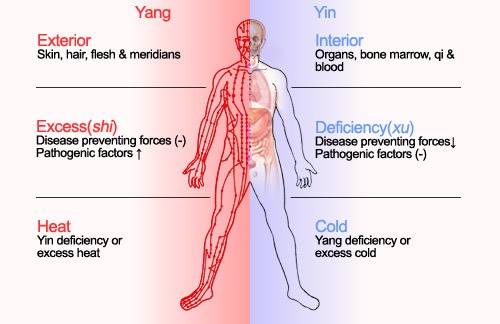
Liù yín (Six Excesses or Pathogenic Factors)
Liù yín, which translates into the Six Excesses or Pathogenic Factors, is a term that is used to describe the patterns of disharmony that particular symptoms display.
In Traditional Chinese Medicine, the Six Excesses are:
- Wind-Yang pathogen and causes bìng to change. Symptoms include paralysis, itching and convulsion.
- Cold-Yin pathogen and that causes cold sensations. Symptoms include slimy and white tongue fur, and a slow pulse.
- Dampness-Yin pathogen that causes sluggishness. Symptoms include greasy tongue fur, and symptoms of Spleen dysfunction.
- Dryness-Yang pathogen that dries out body fluids. Symptoms dry skin, dry mouth, dry cough, and nosebleeds.
- Heat/Fire-Yang pathogenic factor. Symptoms include high fever, red tongue, inflammation, constipation, and dry skin.
- Summer Heat-Yang pathogen that depletes qi and body fluids. Symptoms include dehydration and exhaustion.
These symptoms resemble the effects of Six Climatic Factors.
The relationship between the Six Excesses and Six Climatic factors is disputed. Some doctors argue that the relationship is merely coincidental, while others maintain that there is a direct cause and effect relationship. However, it is usually held that the Six Excesses can arise without external influence. In this case, they are denoted as being internal (e.g. internal-fire, etc.).
Diagnosing Disharmony Patterns in Traditional Chinese Medicine
Within a healthy body, the functional entities are in harmony and balance. When they become unbalanced, illness arises.
As such, illness can be identified as to how the functional entities are imbalanced. At the most basic level, this is measured as there being an excess (vacuity) or deficiency (stagnation) in one the entities. For example, "Spleen qi vacuity" identifies a deficiency of qi in the Spleen, which is one of the Zang-fu organs. Whether the cause of the diseases is internal or external is considered as well as it's Excess.
The method for identifying disharmony patterns is a complex process of eight principles known as biàn zhèng (Eight Principles of Diagnosis in Traditional Chinese Medicine). In addition to the Principles, it accounts for tongue and pulse characteristic patterns. In the next article, we will discuss how disharmony patterns are identified.
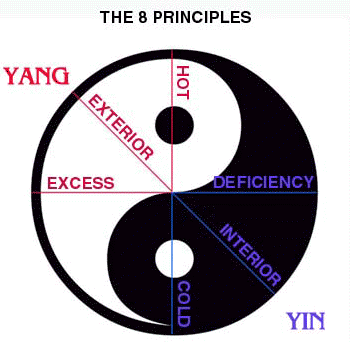 A visual summary of Eight Principles.
A visual summary of Eight Principles.
If you found this article interesting, then perhaps you should consider a career in Oriental Medicine and acupuncture. Learn more by downloading the free career guide below or by visiting our Florida acupuncture school program page.
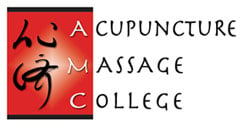
 (305) 595-9500
(305) 595-9500



-2.png?width=572&name=Social%20Ratio%20(1)-2.png)




